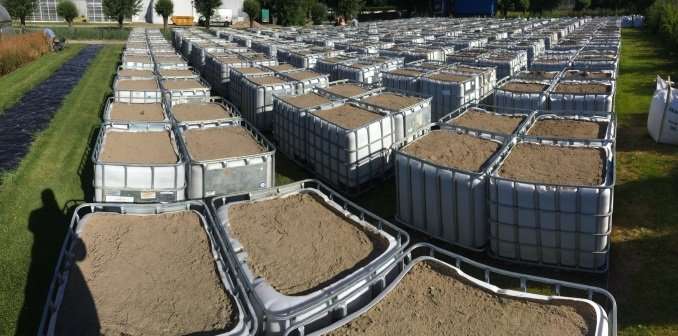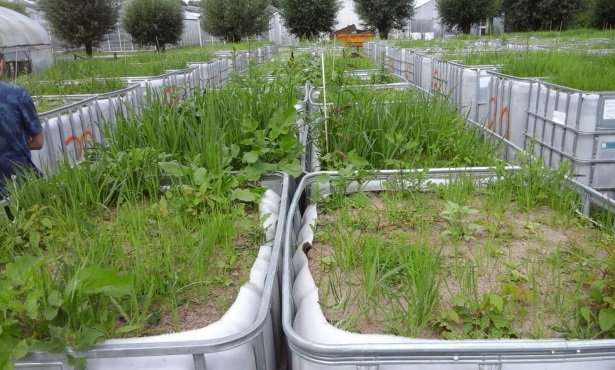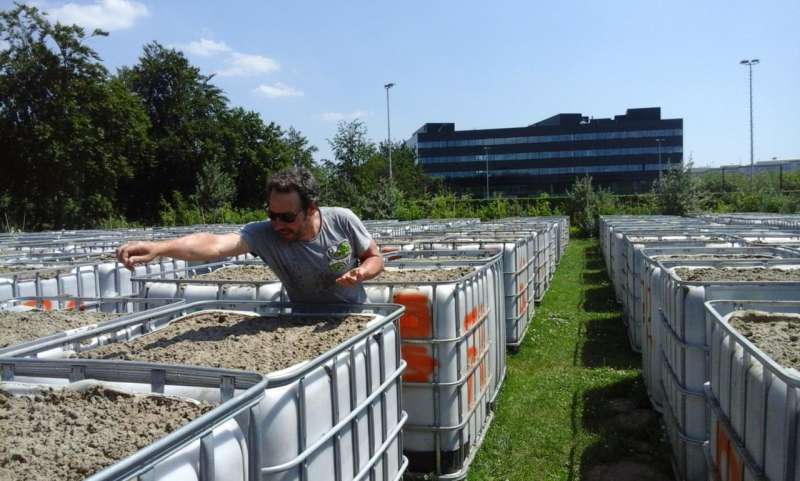Dutch researchers construct ecosystem of the future

Can biodiversity provide insurance against the potentially harmful effects of climate change? And do decreases in biodiversity eliminate this insurance? To tackle these burning questions, the Ecology and Biodiversity research group at Utrecht University have established a large experiment to examine the interaction between biodiversity and climate change: The Utrecht University Biodiversity and Climate Variability Experiment, or UU BioCliVE. In the project, researchers from Utrecht University collaborate with the Botanic Gardens, students, and outside contractors. The experiment was launched yesterday with a mini-symposium and an opening by Gerrit van Meer, Dean of the Faculty of Science.
The long-term experiment uses 352 containers, each with 1000 liters of soil, to precisely construct grassland ecosystems that represent a gradient of biodiversity. Professor George Kowalchuk, head of the Ecology and Biodiversity group, explains: "By using such large constructed ecosystems, we can precisely manipulate our grassland communities, while achieving a realistic scale that allows for real-life ecosystem interactions. At the same time, we can impose future climate conditions that for instance change precipitations patterns, which for the Netherlands means drier summers and wetter winters, where extreme rainfall and drought events occur more often."
Ecosystems of the future
Two of the most pressing issues facing our environment are climate change and biodiversity loss. Human activities are resulting in a sharp decline in biodiversity, while at the same time, climate change is impacting the world's ecosystems. It long been assumed that biodiversity can help ecosystems be more resistant to climate change, but if and how this occurs remains unknown. UU BioCliVE mimics ecosystems of the future, thereby allowing us to understand the mechanisms by which biodiversity helps to buffer ecosystems against potential harmful effects of climate change. Such knowledge will be critical as we develop management plans for the future that help to maintain biodiversity and preserve ecosystem functioning.

Unique experiment
This unique experiment is the first of its kind: precisely combining the impacts of climate and biodiversity at a realistic scale. Additionally, it is probably the largest experiment of its kind. The experiment requires a multidisciplinary approach in which diverse researchers to examine multiple ecosystem properties, including production, susceptibility to invasion, nutrient cycling, the development of below-ground communities, and food-webs and plant-microbe interactions.

Provided by Utrecht University Faculty of Science




















